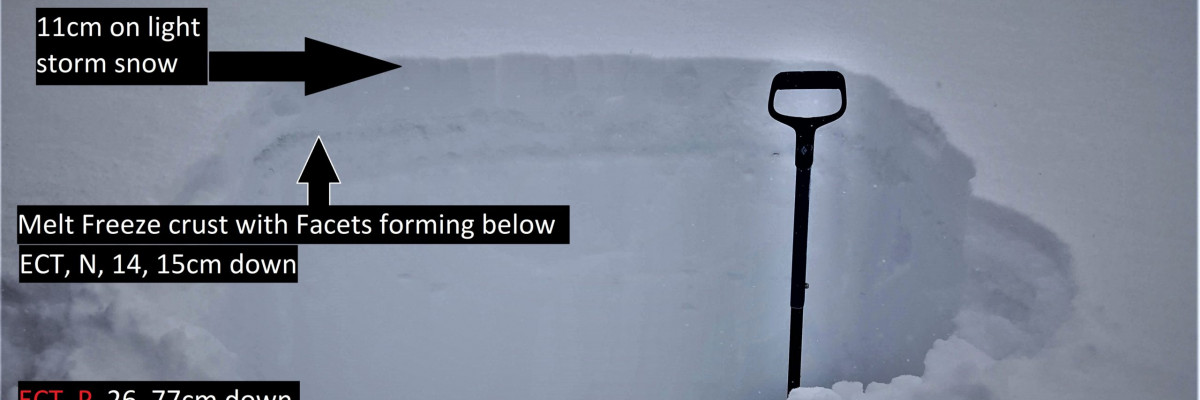The avalanche danger in the west-central Montana backcountry is MODERATE. New snow and winds have created avalanche conditions.
Good Morning. This is Travis Craft with the West Central Montana Avalanche Center advisory on Tuesday, March 23, 2021. This advisory does not apply to operating ski areas and expires at midnight tonight. The USDA Forest Service is solely responsible for its content.
Weather and Snowpack
Temperatures range from 17 to 26 degrees this morning. Over the last 24 hours, .3 to .6 inches of SWE have been recorded. Winds will be light today.
Yesterday we found upper elevation start zones and leeward aspects to have wind slabs. These slabs ranged in depth from a couple of inches to 10 inches. These slabs will be sensitive to humans today.
New snow has not bonded to old snow surfaces. This can generate small slides that can knock you off your feet. Use test slopes to see how the new snow is bonding. Terrain traps such as gullies concentrate the depth and strength of these slides. Obstacles such as cliffs or rocks will increase the likelihood of trauma.
We found propagation in our pit on a north-facing slope on facets. This is not a widespread problem, but remember to reassess the snowpack as you travel in the mountains and be prepared to dial back objectives when found.
Cornices and glide cracks will be with us for the rest of the season. These are two unpredictable avalanche problems. The cornices remaining after the warmth are a hazard. This hazard will increase with warmth, sun, or rain. Give them a wide berth above and stay out from underneath. Glide cracks will have opened and accelerated with the warmth. While slowed, they are still opening despite cold temperatures as the ground beneath the snowpack remains unfrozen. They can fail unexpectedly, creating full-depth avalanches. Stay off slopes where they are present.
Bottom Line
Winter weather is back. Look for sheltered slopes today. Choose slopes with a supportable crust. On these slopes managing your sluff will be important. Dig a pit. Search for instabilities, not stability. Use test slopes and hand pits to see how the new snow is bonding. Reassess conditions throughout the day and stay alert for signs of instability. Look for red flags. Carry a beacon, shovel, and probe.
Public Observations
Thank you to everyone who has taken the time to send in a public observation. Please keep sharing what you find and see while out in the backcountry. You can now text us your observations to (406) 219-5566 when you don’t have time to fill out the observations page.
Ski and ride safe.














